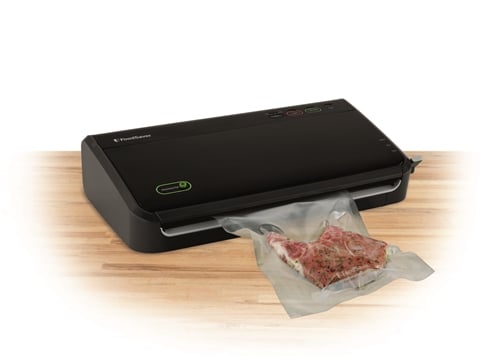
How to Sous Vide with a Vacuum Sealer
- Tips and How To's
- 10/21/14
- Share
For perfectly tender and juicy meats, few food preparation methods compare to sous vide. Modernist Cuisine reported that this method is ideal for preparing meats and seafood, as it often proves to be a more effective means of ensuring that your dishes are done.
Understanding the Science Behind the Process
Sous vide is all about the temperature, as this gauges whether your meats are complete or not. To begin this method, you must first seal your ingredients in an airtight plastic bag, then submerge it in a water bath for a predetermined amount of time, or until it has reached a set temperature. After the food is removed from the bath, you can sear or poach it - depending on your preference - and then serve it.
Modernist Cuisine noted that there are many scientific reasons as to why sous vide proves to be such an effective way of preparing food. Unlike other preparation methods, using plastic bags to contain and cook foods ensures that all juices that emerge from the meat stay put - by fostering a moist environment, your food can retain its natural juices and produce more tender cuts.
The Importance of Vacuum Sealing
Instead of using a traditional plastic bag, Popular Science magazine recommended vacuum sealing your foods before submerging them in the water. Specifically, your FoodSaver® Vacuum Sealing System will become your best friend as you learn to perfect the sous vide. The source noted that using a vacuum sealer is the best way to keep the food secure during its water bath, meaning water can't permeate through the bag and mess with your ingredients.
Prior to sealing, be sure to coat your meat with all the spices and marinades necessary - seasoning then sealing allows the meat to further soak up the dressing as it tenderizes during the sous vide process. As an added bonus, using your vacuum sealer prevents air from slowly entering the bag - an important consideration to keep in mind, as air in the bag can change your food's temperature and ruin the cooking process.
Finishing Touches
After you've prepared your meats, sealed them in an airtight container and submerged them in water, the entire process becomes about patience. Whether you're waiting for a temperature or a time, it's important to remain patient during this period, as imperfect sous vide may lead to poorly prepared or off-tasting products. Don't worry if you don't get it right the first time - keep perfecting your process and you'll become a sous vide savant in no time.



